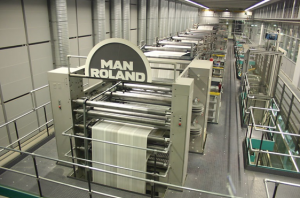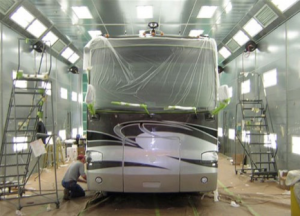 The paint and print industries have traditionally been associated with high exposure to chemicals for obvious reasons. Improvements are happening all the time with greater use of low-VOC and no-VOC based paints, but solvent exposure can still be significant for some products, especially when large quantities are being used.
The paint and print industries have traditionally been associated with high exposure to chemicals for obvious reasons. Improvements are happening all the time with greater use of low-VOC and no-VOC based paints, but solvent exposure can still be significant for some products, especially when large quantities are being used.
Of course not all paints and inks are equal – isocyanates, commonly found in 2-pack paints are very potent respiratory irritants, and are one of the leading cause of workplace related asthma here, and spraying isocyanate based paints always requires rigorous use of appropriate control measures such as RPE engineering control, monitoring, suitable clearance times in spray booths etc. In addition some specialized activities such as the aircraft industry regularly use coatings containing hazardous and carcinogenic ingredients such as chrome VI.
 Printing inks and plate cleaners often usually contain at least some VOC’s, which can have a range of harmful effects, as well as occasionally heavy metals, biocides and other harmful components. Other potential health hazards can also exist in these industries, such as potential ozone generation by high-intensity UV curing lamps, and exposure to various cleaners, de-greasers, paint strippers and other surface preparation agents.
Printing inks and plate cleaners often usually contain at least some VOC’s, which can have a range of harmful effects, as well as occasionally heavy metals, biocides and other harmful components. Other potential health hazards can also exist in these industries, such as potential ozone generation by high-intensity UV curing lamps, and exposure to various cleaners, de-greasers, paint strippers and other surface preparation agents.
Noise is a significant hazard around large printing presses, and even short periods can result in high daily noise exposure.
 Isocyanate monitoring for 2-pack paints, foams etc.
Isocyanate monitoring for 2-pack paints, foams etc.- Solvent exposure assessment during spray painting or printing
- Chrome VI, Formic acid and other contaminants involved aircraft coating
- Ozone exposure assessment from UV lamps
- Workplace Noise Surveys
Useful Resources and Links:
- HSE COSHH essentials page for paint spraying – really detailed information source with focus on isocyanates
- Hexavalent Chromium – OSHA information page on hexavalent chromium (Chrome VI)
- Reducing VOC solvent use in the Printing Industry – very thorough Australian guide to practical solvent reduction measures

